Last weekend I drove out to an old military buddy’s house. He has a multi-acre yard with his own range and I was looking forward to clanging some steel. We set up the range, I loaded up, and began with six shots at his dueling tree. As soon as I hit the sixth plate I brought the gun back to my workspace to conduct a universal revolver reload. Something was wrong. The middle and ring fingers of my support hand could barely budge the cylinder open. I put a little “oomph” into it and the gun popped open, but I knew I had a problem. In a first for me, I had just experienced a backed-out ejector rod malfunction.
Note, 01/26/2018: Grant Cunningham recently linked to this post. He helpfully also added a few comments. Since Grant is a world-class revolver gunsmith, you should probably take his word before you take mine. You can find this thoughts at http://www.grantcunningham.com/2018/01/hump-day-reading-list-january-24-2018/.
The Backed-Out Ejector Rod
Not knowing any better I didn’t immediately recognize this malfunction for what it was and take appropriate corrective action. I thought it might have been the ammunition (Perfecta .357), so I inspected the brass. All looked good – no bulged primers. Next, I looked under the extractor star, only to find it clean as a whistle. Lacking the imagination to diagnose this issue I loaded six more rounds and knocked the dueling tree plates around the other way. Bad idea.
After that second six the cylinder was stuck, but much more firmly this time. It took a couple good smacks with the heel of my hand to release it from the frame. “What the heck is going on with my prized 686?” I wondered. Rather than obsess about it I grabbed my friend’s spare Glock 19 and enjoyed the rest of the afternoon… but not before sending a rather melancholy email to Mr. Mike Wood, bemoaning the fate of my beloved pre-lock sixgun. Fortunately, Mike diagnosed the problem (and turned my mood around) almost immediately!
Pre-Malfunction Indicators
I didn’t have a whole lot of warning before the backed-out ejector rod bound up my gun. My 686 was extremely clean. I had recently detail-cleaned and function-checked it. I had fired it only a week prior, and I had been using it earlier in the day to take some photos. Loading and unloading the cylinder during the photo shoot had revealed nothing amiss. Only after firing six rounds did I see the indicators of a worsening issue.
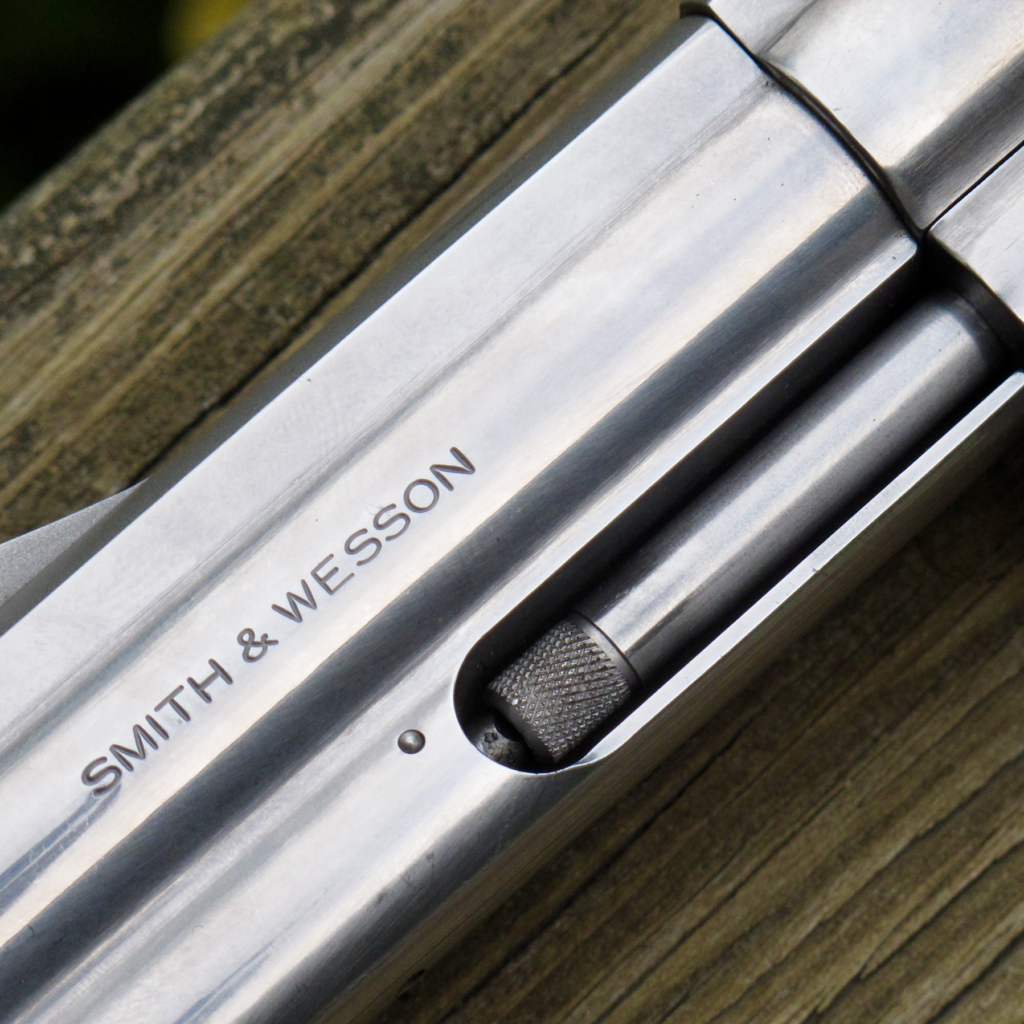
The only indicator I had for this malfunction was the first sticky cylinder opening. Being so used to reloading the revolver normally, this was enough to throw me off my cycle and confuse me. This is not what I would want to happen during a defensive encounter. From now on checking the tightness of the ejector rod will be a step in my regular inspection process.
Opening the Cylinder
The first step in fixing the backed-out ejector rod is opening the cylinder. If the gun isn’t locked up too hard, you can probably get it open like I did, with a firm smack from the heel of your hand (while depressing the cylinder latch, obviously). This isn’t the preferred technique unless you are in combat, however. Smacking the cylinder open risks bending the ejector rod. The better way to get the gun open is to tighten the rod enough to unlock the action. This will require holding the ejector rod in place while rotating the cylinder, and rotating the cylinder requires freeing the cylinder stop.
At this point we should cover some safety stuff. Freeing the cylinder stop MAY require partially cycling the action by slightly pulling the hammer – or trigger – back (it was necessary in my case). It also may not. Try to shim the cylinder stop by inserting a thin piece of material between it and the cylinder. A business card works great for this purpose. If there is not enough clearance for the shim, or if the cylinder bolt just keeps chewing up the business card (as was my experience) follow the instructions below:
IF THE CYLINDER CONTAINS LIVE AMMUNITION, USE EXTREME CAUTION! FIRST, MAKE SURE YOU HAVE EYE- AND EAR-PROTECTION ON. ENSURE THE FIREARM IS POINTED IN A SAFE DIRECTION AND ALL OF YOUR BODY PARTS (AND THOSE OF FRIENDS, FAMILY, BYSTANDERS, NEIGHBORS, AND PETS) ARE CLEAR OF THE MUZZLE. NEXT, CONTROL THE HAMMER, IF YOUR REVOLVER HAS ONE THAT IS EXPOSED. IF YOUR REVOLVER DOES NOT HAVE AN EXPOSED HAMMER, CONTROL THE CYLINDER, AND RELEASE THE TRIGGER AS SOON AS THE CYLINDER IS FREED.
Once the cylinder is freed, insert a shim between the cylinder and the cylinder bolt. This will allow the cylinder to spin freely. Once you can turn the cylinder, you have to arrest the ejector rod. This is best done with a non-marring instrument. I have found that a No. 2 Pencil eraser works pretty well for this task. If you are using a S&W revolver manufactured after 1961, the thread on the ejector rod is a left-hand (reverse) thread, so keep this in mind. Figuring out which way to turn things can be the trickiest part of the whole operation.
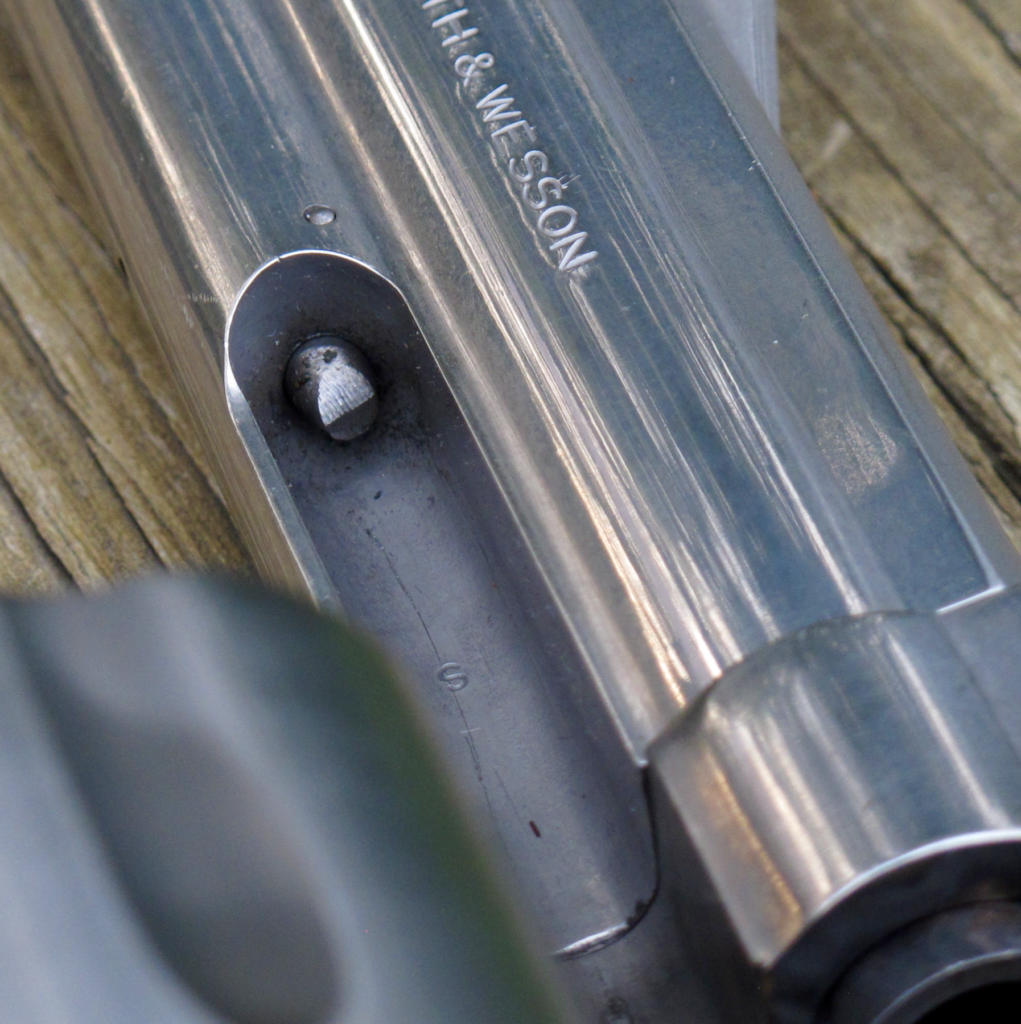
Fixing The Backed-Out Ejector Rod
Fixing this issue is relatively painless if you can get the cylinder open. Once you have it open, remove any live ammunition. Reinsert at least a couple of pieces of brass to support the extractor star when you apply torsion. This isn’t strictly necessary, but I’ve heard it recommended frequently, and I can’t think of a good reason not to do it.
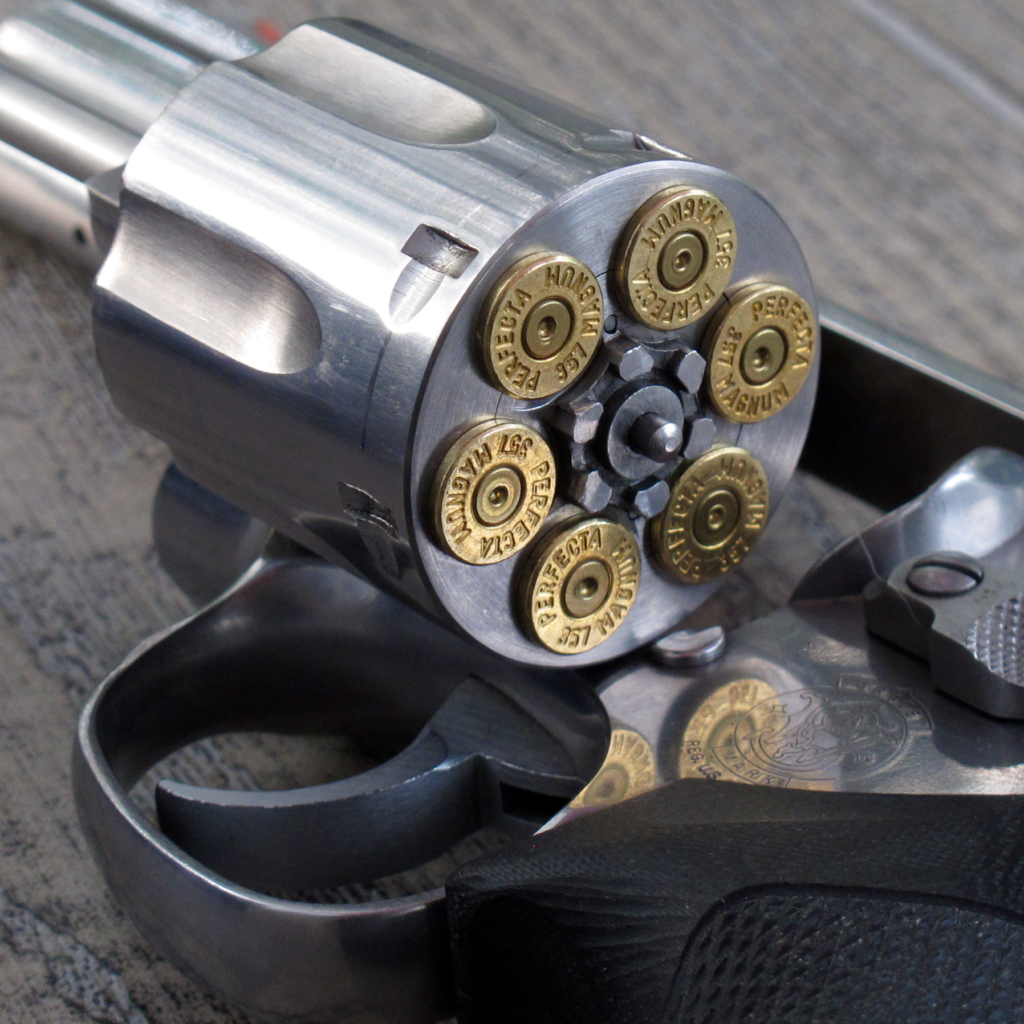
Next, you will need some pliers to tighten the ejector rod. You will want to pad the jaws of the pliers for two purposes. The first is to prevent scratching the ejector rod. The second is to provide a natural “clutch” that will slip and prevent you from overtightening and stripping the fine threads of the rod. Though most forums and blog posts recommend leather, I didn’t have a scrap piece of leather on hand. I found that the cuff of a flannel shirt worked just fine.
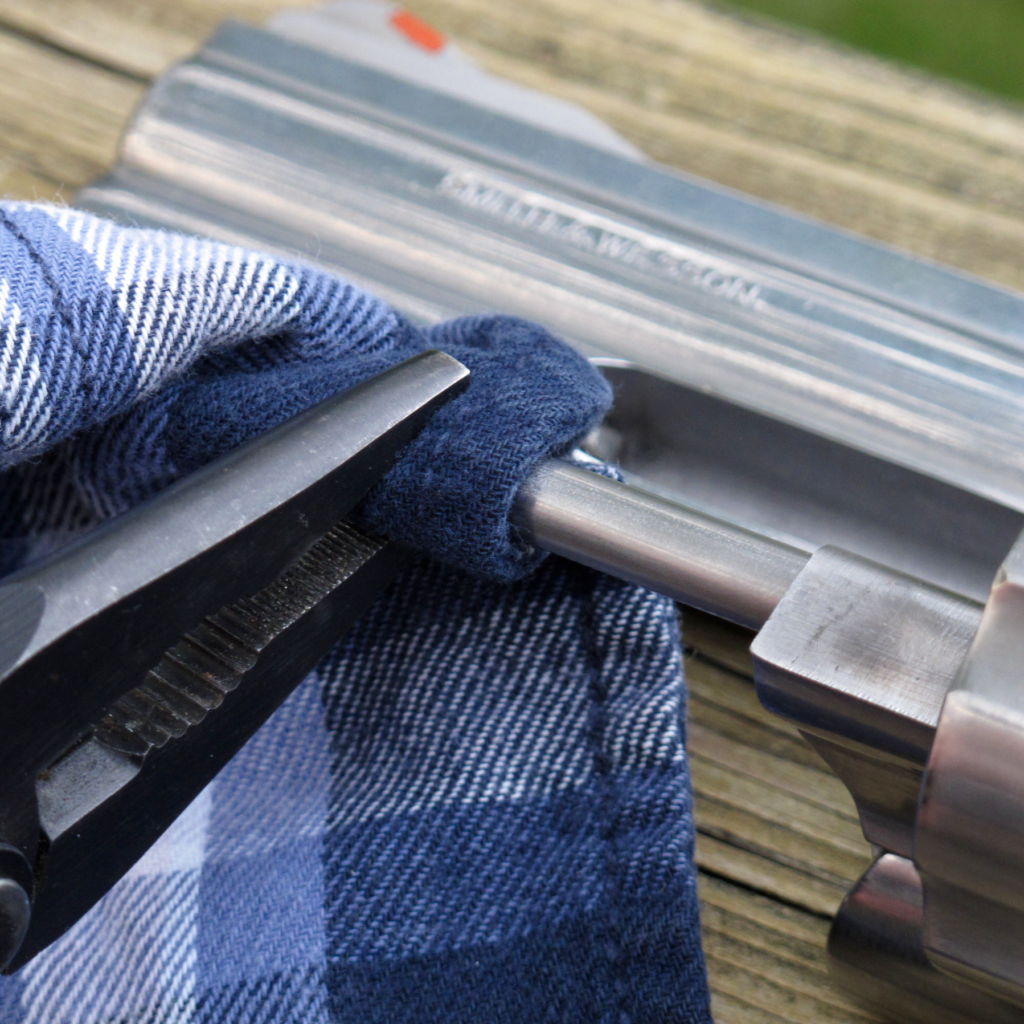
The Bottom Line
Though a lot of people have said that “revolvers don’t malfunction” or “all you have to do [if your revolver malfunctions] is pull the trigger again,” there is another, smaller group of writes that says if your revolver goes down, it’s probably going to take tools to fix it. Guess which camp I fall into? Revolvers malfunction – there’s no getting around it. The best we can do is inspect our guns regularly for proper fit and function of all these critical parts.
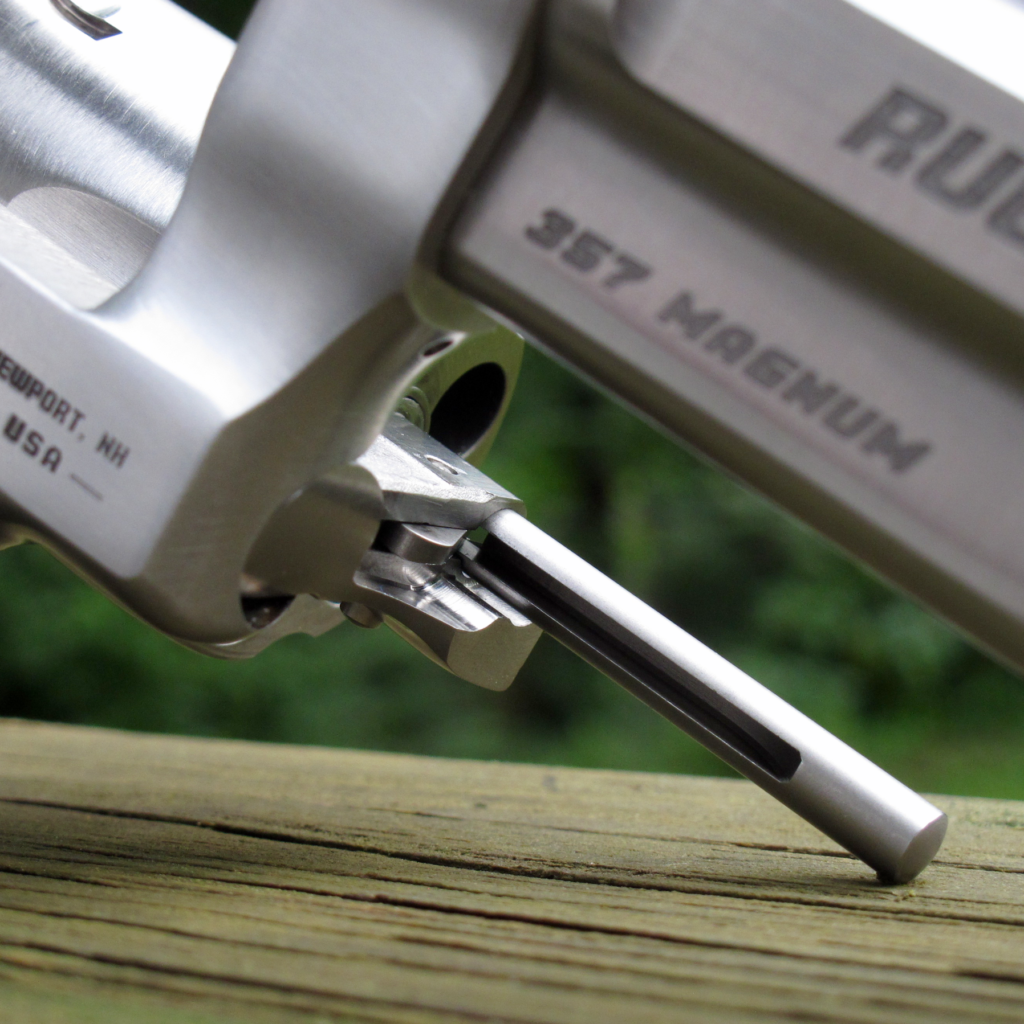
The ejector rod is not one of the “cool” parts of the revolver. My eye isn’t usually drawn to it when I’m checking out a new wheelgun. But it is a critical component. As you’re doing your weekly inspection of your carry gear, take that extra couple of seconds to make sure it’s tight. It almost always will be, but if it’s ever loose you’ll thank yourself.

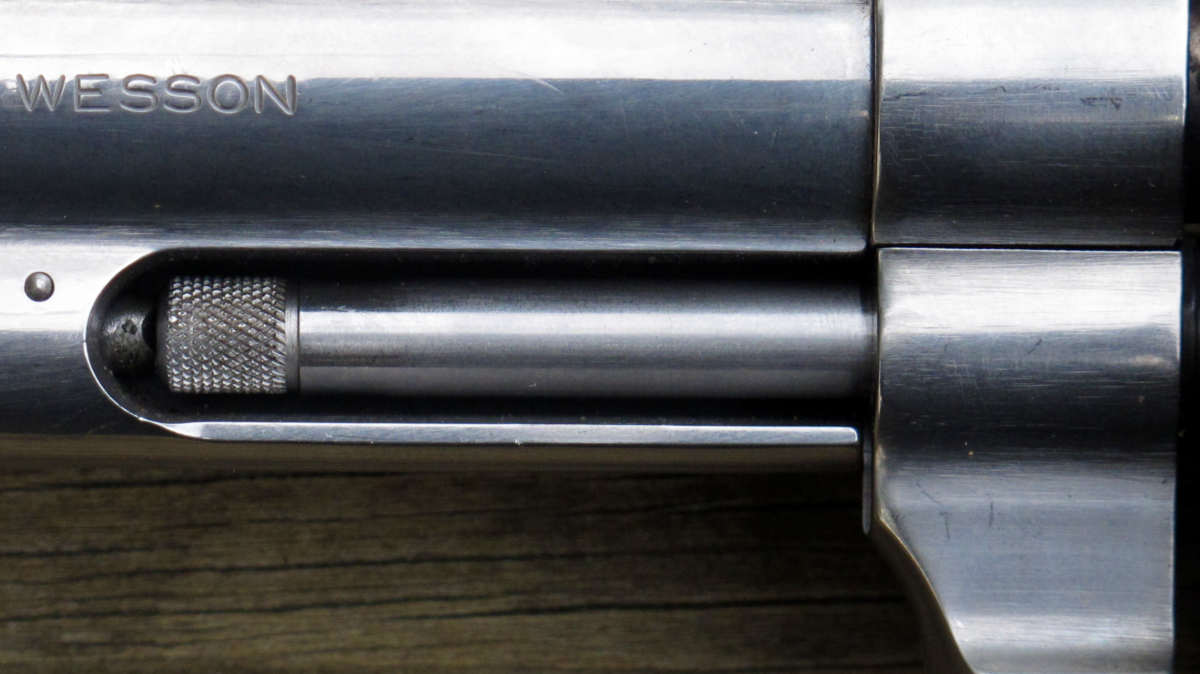
Good advice for a common wheelgun problem.
I think through it all “non-marring” is the bit most of us ham-fisted ‘Mericans forget about. Not that I know anything about that at all. ::ahem::
We’ve all been there…
Very well written and a great description of a potential problem. I have seen this very thing happen before. Other common problems I have seen are dirt, lead shavings, etc. under the extractor star which tends to bind up free rotation of the cylinder (decreasing headspace). Next I have seen the forward most (front) side plate screw working it’s way loose.This issue allows for poor alignment of the crane/yoke assembly, and in some cases will allow the cylinder to fall out of the gun when opened. A proper application of LockTite prevents such from happening.
*** Just my approach,,, when I go to re-tighten the extractor rod I press rearward slightly on the rod allowing the brass cases to hold the extractor star free from binding against the cylinder. On some older revolvers there is a “spur” on the cylinder that aligns into the underside of the extraction star. Care must be taken to NOT snap that off. FYI there are extractor rod “tools” that aid in disassembly & reassembly. Look to Brownells # 080-000-536WB & # 080-000-537WB
A revolver is a tool, in some aspects a fine tool. We check air in the tires on our cars,,, we check oil & other fluid levels as well. What excuse can be offered for not checking out or revolvers before strapping it on our side?
Good information, Ron. Thank you! My problem in checking this stuff out is I don’t have deep, long-term knowledge, so I’m learning as I go. This will definitely be a thing that I check from now on.
Justin
Excellent article, thanks!
Thank you, sir!
Justin
Outstanding write up, the only revolver malfunction I’ve had is with bullet creep on my Ruger .357 LCR.
I was shooting some heavy .357 ammo and after about the third round the cylinder locked up. It was discouraging at first since it was my carry gun but I have since learned it’s limitations and also learned that full house .357 out of a light weight revolver kinda hurts.
It can happen on Rugers, just not the current models. I’ve had this happen a couple of times with my Speed Six.
Jack,
You’re right, I should have been more specific. If you have a current production GP100 or SP101 you don’t have to worry about this as much. The Ruger LCR and some older models still have a screw-in ejector rod. Thanks for pointing that out!
Justin
A timely article. I just experienced this issue the first time I took out a new-to-me S&W model 629, that I bought used. Fixed it myself and it’s not reoccurred through the last 300 rounds.
I’ve had this happen twice, both on M29s. The heavier the recoil is, the more likely it is to back the rod out. The complete cure for this is to remove the rod as specified herein, and then clean well and reinstall with the lowest grade of locktite. This is secure, and yet easily broken loose, if and when the cylinder needs to be removed.
BTW way revolvers don’t have stoppages, but they do JAM. Jams require time and tools to repair(and perhaps parts), jams can be done at the firing line. It would be helpful to understanding if people would use the proper terminology, like not saying “bullet” when one means “cartridge”.
CORRECTION: make that; ” stoppages can be done at the firing line”.
I had a similar problem with my Taurus .41 Tracker. I had functioning problems, I thought I had to take to a gunsmith. On closer observation the ejector rod backed out. So I cleaned it up and applied locktite, problem solved.
To tighten or remove the ejector rod I use an old spring loaded wood clothespin. They make plastic ones. I only use wood. More on why only wood later. Some reading this may not know what a clothespin is. . . . Google it. They usually have two notches for different rope size or clothes thickness. I use the first notch. In a locked cylinder situation the tapered end of the clothespin might also work to wedge the rod snug against the shroud to tighten enough to open the cylinder without damage. When removing the rod for maintenance I always put three spent shells in every other cylinder to support the star, put the clothespin on the rod knurls and grab the clothespin with slip joint pliers to loosen or tighten the rod. If the rod hasn’t been off before you may have to bear down on your pliers. The clothespin may even slip but that’s okay because it is soft wood. You’re not damaging the metal knurls. This is the reason to use only a wood clothespin. If you have to bear down hard plastic will break. Make sure you are turning in the correct direction. S&W is lefty tighty, righty loosey. I took off the rod on a S&W from the turn of not this century but the one before that. Loose was to the right. Tighten your grip and try again. Also, I use slip joint pliers and open the jaws large to get maximum leverage on the bite. You don’t want to be bearing down with an awkward grip. I would NEVER recommend the use of Loctite on the threads. S&W, Ruger, Colt, et al. don’t find “LockTite” necessary, I’ll go with that. What does “proper application of LockTite” or “lowest grade of locktite” mean anyway? If it happens more than once you haven’t learned anything from the first time it happened. Ditto for the yoke screw loosening twice, unacceptable. Folks, come on this is preventative maintenance after you clean your “tool”. Take care of your tools and they will take care of you. I know, not original. Consider, double action revolver technology is over 125 years old. They require attention. Credit for this method of rod removal is due an old Gun Smith who used this method before Brownells thought about selling a tool for the purpose. I apologize for the loquacious response.
Which direction to tighten the ejector rod? Some of the old Smiths use a left handed thread. It’s considered wrong to Loctite them in place but sometimes it’s the only reliable fix.
Yes, revolvers break. I’ve had ejector rod problems, squib loads that stuck a bullet in the cylinder-forcing cone gap, and way too many light strikes. I’ve gone back to factory strength main springs, discovered that light rebound slide springs can lock a gun up, and on and on. I have a Colt Magnum carry that has light strikes in DA – with two factory mainsprings. Thanks to “crush to fit” assembly the firing pin can’t be changed.
So far the only guns I’ve had with no problems are a S&W 586, a S&W 60, and a couple of Glocks. Considering round counts, the Glocks have been the most reliable I’ve owned.
Excellent article for sure. In all of the years I have used revolvers I have never seen this particular issue, but this will now become a routine check item, especially with my S&W 629-5 Mountain Gun, 340 PD, and 60-5 as they are all very hard kicking revolvers. As far as revolvers breaking, yes they do. I just sent my S&W 60-10 in for repair when I noticed the trigger return was sticking. I opened up the side plate to fine a broken hammer block. The part just snapped in two pieces. It didn’t stop me from shooting, but it sure proves revolvers can break. Thanks again for a well written heads up article.
Correction above. Its a 60-10 not 60-5 Duh.
Marv,
I would love to see some photos of that if you took any!
Justin
Will inserting used cases into the cylinder prevent the rod from having a wobble when tightening down? I didnt know to do this and now have a slight wobble on my 686s ejector rod. I in tend to order another new rod and ejector but dont want to bend the new parts. Thanks and awesome write up.
Tom, the spent cases help to prevent bending or breaking the guide pin on the cylinder for the ejector. You can still manage to bend the ejector rod if you aren’t careful, even with spent cases in the cylinder for support. Go easy on the ejector rod and try to ensure that you’re rotating the tip evenly, and not pulling it off axis. Depending on how bad it is, you may be able to straighten your existing ejector rod sufficiently to avoid buying a new one. Good luck!
Thanks! Worked like a charm.
This happened to me on my new 629 I figured it out after the fact when I got home. I was able to empty my cylinder & I simply hand tightened the ejector rod back in place snugly. the gun was safe before I left the range. Not sure anything else was required other than checking it as a routine point of maintenance.
Thank you!
I had this occur only one time, with a Smith and Wesson model 624 .44 Spl revolver.
I used scrap plastic to pad Channel Locks and gave it a turn to seat and then “just” had tightened.